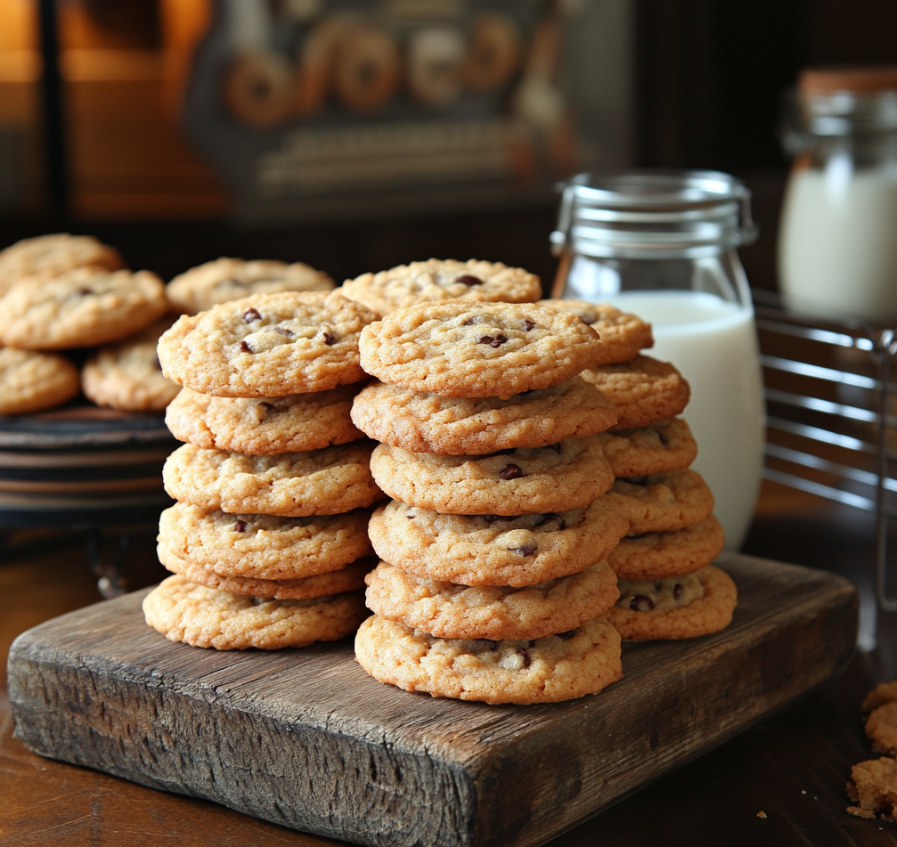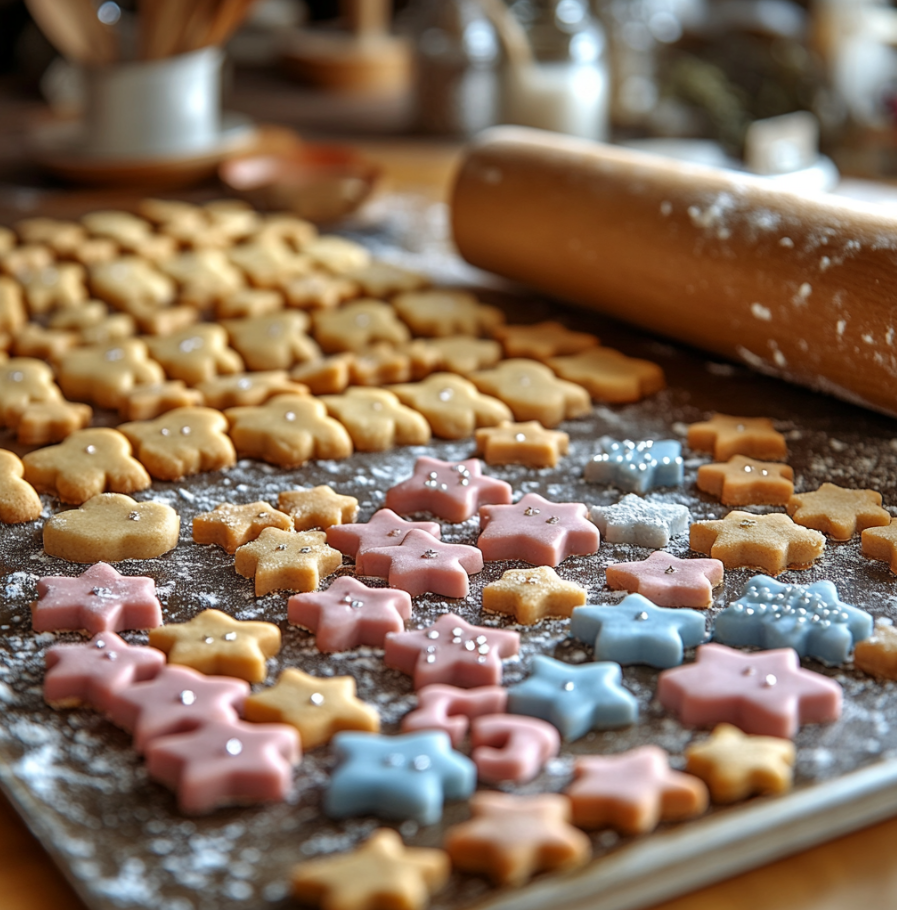Cookies are a universal treat, cherished for their versatility and irresistible flavors. Whether you like them soft and chewy or crisp and crunchy, there’s a type of cookie out there for everyone. But did you know that all cookies fall into six basic categories? Understanding these categories can elevate your baking skills and help you choose the perfect recipe for any occasion.
The Six Basic Types of Cookies
We can classify cookies into six primary types based on how bakers prepare and bake them: drop cookies, rolled cookies, bar cookies, molded cookies, refrigerator cookies, and pressed cookies. Each type offers unique characteristics that define its texture, shape, and flavor.
For those curious about exploring more cookie varieties, check out the Popular Japanese Cookies Guide, which provides insights into the most beloved cookie types in Japan.
Drop Cookies
Definition and Characteristics
Drop cookies are one of the simplest and most common types of cookies. You typically drop soft dough by spoonfuls onto a baking sheet. As they bake, the dough spreads out, resulting in a cookie that’s usually soft and chewy with a slightly crisp edge.
Examples of Drop Cookies
- Chocolate chip cookies
- Oatmeal raisin cookies
- Peanut butter cookies
Baking Tips for Drop Cookies
To achieve perfect drop cookies, ensure the dough has the right consistency—not too wet, not too dry. A cookie scoop can help you drop uniform amounts of dough onto the baking sheet, ensuring even baking.
If you enjoy soft and chewy cookies, try making Banana Bread with Chocolate Chips, which offers a similar satisfying texture.

Rolled Cookies
Definition and Characteristics
Rolled cookies are made from dough that you roll out to a uniform thickness and then cut into shapes with cookie cutters. This type of cookie works well for occasions that call for decorative shapes, such as holidays or themed parties.
Examples of Rolled Cookies
- Sugar cookies
- Gingerbread cookies
- Shortbread cookies
Techniques for Rolling and Cutting Cookies
When preparing rolled cookies, chilling the dough before rolling is crucial. Chilled dough is easier to handle and less likely to stick to the rolling pin. Rolling the dough between two sheets of parchment paper also helps maintain an even thickness and prevents sticking.
For more tips on mastering rolled cookies, you can explore these Cookie Baking Techniques that offer expert advice on achieving perfect results every time.

Bar Cookies
Definition and Characteristics
Bar cookies are made by baking the dough in a shallow pan and then cutting it into bars or squares. These cookies are often denser and can range from chewy to cake-like, depending on the ingredients and baking time.
Examples of Bar Cookies
- Brownies
- Lemon bars
- Blondies
Tips for Baking Bar Cookies
To ensure even baking, spread the batter evenly in the pan. Lining the pan with parchment paper makes it easier to lift the cookies out for cutting. For clean, sharp edges, allow the cookies to cool completely before slicing.
For those who enjoy citrus-flavored treats, Lemon Crinkle Cookies offer a delightful twist on the classic bar cookie with a zesty flavor and chewy texture.
Molded Cookies
Definition and Characteristics
Molded cookies are shaped by hand or with molds before baking. These cookies often have a distinct shape and can be decorated with designs pressed into the dough, making them perfect for special occasions.
Examples of Molded Cookies
- Peanut butter cookies
- Shortbread
- Madeleines
Techniques for Shaping Molded Cookies
When making molded cookies, handle the dough gently to maintain its shape. If you use molds, lightly flour them to prevent sticking. For hand-shaped cookies like peanut butter cookies, pressing them with a fork creates a classic crisscross pattern.
Refrigerator (Icebox) Cookies
Definition and Characteristics
Refrigerator cookies, also known as icebox cookies, are made from dough that is chilled until firm and then sliced into rounds before baking. This type of cookie is convenient because you can prepare the dough ahead of time and store it until ready to bake.
Examples of Refrigerator Cookies
- Pinwheel cookies
- Checkerboard cookies
- Cranberry orange cookies
Tips for Perfect Refrigerator Cookies
Ensure the dough is thoroughly chilled before slicing to maintain the cookie’s shape during baking. Use a sharp knife to cut the dough into even slices. If the dough becomes too soft while slicing, return it to the refrigerator to firm up.
Pressed Cookies
Definition and Characteristics
Pressed cookies are made from soft dough that is pressed through a cookie press or piping bag to create intricate shapes. These cookies are often delicate and buttery, making them a favorite for holiday baking.
Examples of Pressed Cookies
- Spritz cookies
- Butter cookies
- Viennese cookies
Using a Cookie Press
When making pressed cookies, ensure the dough is soft enough to pass through the cookie press but firm enough to hold its shape. Experiment with different discs in the press to create a variety of shapes, and decorate the cookies with sprinkles or colored sugar before baking for a festive touch.
If you’re interested in another fun and flavorful recipe, consider trying Coconut Cookies, which offers a tropical twist on traditional pressed cookies.
FAQs about the 6 Types of Cookies
What are the six basic types of cookies?
The six basic types of cookies are drop cookies, rolled cookies, bar cookies, molded cookies, refrigerator cookies, and pressed cookies. Each type is distinguished by its preparation method and resulting texture.
Which type of cookie is the easiest to make?
Drop cookies are generally the easiest to make because they require minimal shaping—just drop the dough onto a baking sheet and bake.
Can you mix types of cookies in the same batch?
While you can mix different types of cookies in the same batch, consider the varying baking times and temperatures required for each type to ensure they bake evenly.
How do you store different types of cookies?
Most cookies should be stored in an airtight container at room temperature. However, refrigerator cookies and molded cookies can be stored in the refrigerator before baking, while other types are best stored at room temperature to maintain their texture.
What is the difference between rolled and molded cookies?
Rolled cookies involve rolling out dough and cutting it into shapes, while molded cookies are shaped by hand or with molds. Rolled cookies are typically thinner and crisper, whereas molded cookies often have a denser, more uniform texture.
Conclusion
Understanding the six types of cookies opens up a world of possibilities in the kitchen. From the simplicity of drop cookies to the intricate designs of pressed cookies, each type offers something unique. Whether you’re a beginner baker or a seasoned pro, exploring these different cookie types can inspire new creations and perfect old favorites. So, get into the kitchen and start baking your way through these delicious cookie types!
For more insights into cookie varieties, consider checking out the Famous Hokkaido Cookie to explore the rich flavors of Japan’s celebrated confections.

